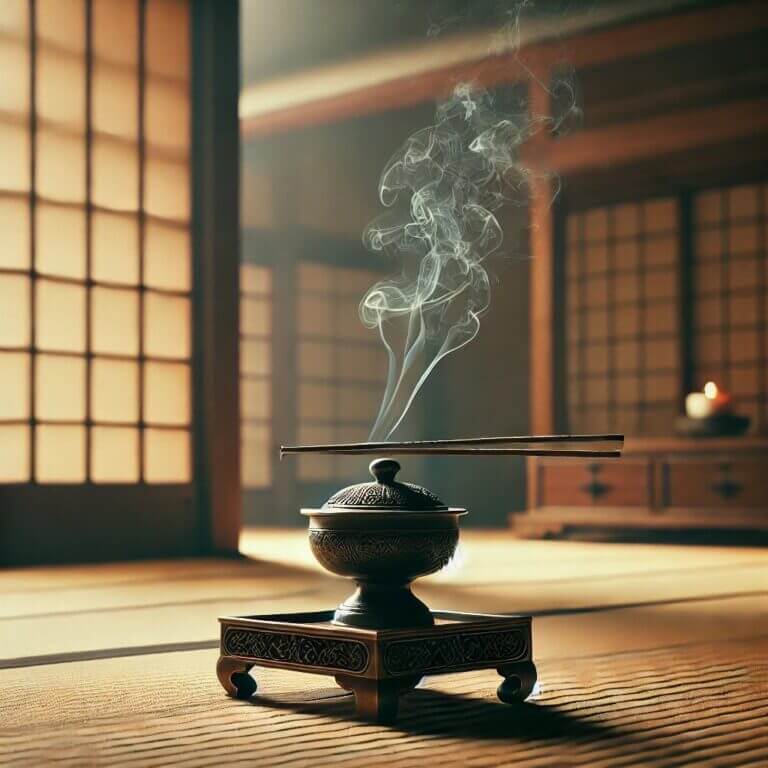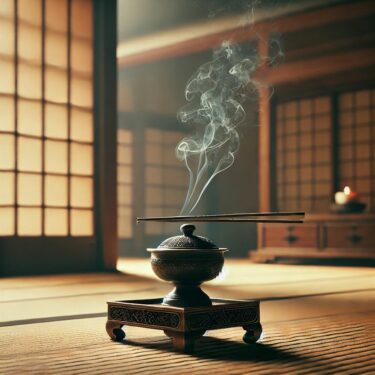Introduction
In Japan, incense is not just a product; it is a cultural artifact deeply intertwined with history, tradition, and spirituality. From ancient rituals to modern-day relaxation, incense has been a part of Japanese life for centuries. Known as “香” (kō), Japanese incense is celebrated for its subtle fragrances, artistic craftsmanship, and ability to create an atmosphere of tranquility.
This guide delves into the traditional and modern uses of incense in Japan, explores its effects on the mind and body, and provides insights into why it remains a beloved practice today.
1. A Brief History of Incense in Japan
1.1 The Origins
Incense was introduced to Japan from China and Korea around the 6th century, primarily for Buddhist rituals. Over time, it evolved from a religious tool to a staple in Japanese culture.
1.2 The Rise of Kōdō (The Way of Incense)
During the Heian period (794-1185), incense became a refined art form known as Kōdō (“The Way of Incense”). Aristocrats used incense not only for religious purposes but also to enhance their living spaces and personal belongings. Kōdō involves appreciating the subtlety of various scents and even engaging in incense-smelling games, where participants guess the type of incense being burned.
1.3 Modern Adaptations
In contemporary Japan, incense is used in diverse settings:
- Temples and shrines: For prayers and rituals.
- Homes: To create a calming atmosphere or honor ancestors.
- Wellness spaces: As a tool for relaxation and mindfulness.
2. The Benefits of Using Incense
Japanese incense is not merely about fragrance; it provides a range of physical, emotional, and spiritual benefits.
2.1 Enhancing Relaxation and Reducing Stress
Certain types of incense, such as sandalwood and agarwood, are known for their calming properties. Studies (Yamamoto et al., 2015) have shown that these scents can lower cortisol levels, helping to reduce stress and anxiety.
2.2 Aiding Meditation and Mindfulness
Burning incense during meditation is a common practice in Japan. The subtle aroma helps individuals focus, grounding their thoughts and enhancing the overall mindfulness experience.
2.3 Purifying the Space
Incense has been used historically to cleanse the air of negative energies. While this may sound spiritual, some studies suggest that certain incense ingredients have antimicrobial properties that help purify indoor air (Kim et al., 2017).
2.4 Connecting with Tradition
For many Japanese families, burning incense at family altars (butsudan) is a way to honor ancestors and maintain a spiritual connection to the past.
3. Types of Japanese Incense
Japanese incense stands out for its high-quality ingredients and artistic presentation. Here are some popular types:
3.1 Stick Incense (線香, Senkō)
- The most commonly used form, suitable for temples, homes, and meditation.
- Popular fragrances: Sandalwood, agarwood, and floral scents.
3.2 Cone Incense
- Compact and easy to burn, cone incense releases a strong aroma quickly.
- Often used in wellness centers or for personal relaxation.
3.3 Spiral Incense
- Designed for long-lasting use, often seen in temples or outdoor ceremonies.
3.4 Powdered Incense
- Traditionally used in Kōdō ceremonies. Requires specialized burners.
3.5 High-End Incense
- Crafted with rare ingredients like kyara (highest-grade agarwood), these are prized for their unique and luxurious aromas.

4. How to Use Incense Safely and Effectively
4.1 Choosing the Right Incense
Select an incense based on your purpose:
- Relaxation: Choose sandalwood or lavender.
- Meditation: Opt for agarwood or frankincense.
- Aromatic pleasure: Floral or citrus scents.
4.2 Setting the Mood
- Burn incense in a quiet, well-ventilated space.
- Use appropriate holders or burners to ensure safety.
4.3 Ritual and Intention
- Light the tip, let it burn for a few seconds, then gently blow out the flame to let it smolder.
- Focus on your breathing as the scent fills the room, creating a calming ambiance.
5. The Science Behind the Scents
Modern research supports the traditional claims of incense’s benefits:
- Relaxation: Studies indicate that sandalwood’s active compound, α-santalol, promotes relaxation by interacting with the brain’s GABA receptors.
- Focus: Agarwood is rich in aromatic resins that enhance mental clarity (Takahashi et al., 2020).
- Air Purification: Ingredients like frankincense release compounds that reduce airborne bacteria.
6. Where to Find Authentic Japanese Incense
6.1 Specialty Stores
- Japanese incense brands like Shoyeido, Nippon Kodo, and Baieido are internationally recognized for their quality.
6.2 Online Options
- Amazon and specialty websites offer a wide variety of Japanese incense, often with international shipping.
6.3 Artisan Markets
- For a unique experience, look for handcrafted incense at local markets or directly from Japanese artisans.
7. Incorporating Incense into Modern Life
In today’s fast-paced world, incense offers a simple yet profound way to:
- Create a peaceful home environment.
- Enhance yoga or meditation practices.
- Celebrate cultural heritage.
By bringing incense into your daily routine, you can cultivate a sense of tranquility and mindfulness that aligns with traditional Japanese practices.
Conclusion
Incense is more than a pleasant fragrance; it is a gateway to relaxation, mindfulness, and connection to tradition. By understanding its history, benefits, and modern applications, you can incorporate this ancient art into your life and enjoy its profound effects on the mind and spirit.
Let the subtle aroma of Japanese incense transform your space and elevate your everyday moments.
Ready to explore Japanese incense? Stay tuned for our upcoming recommendations of the best incense for relaxation and mindfulness!








